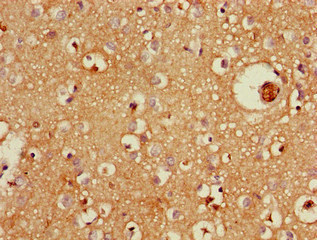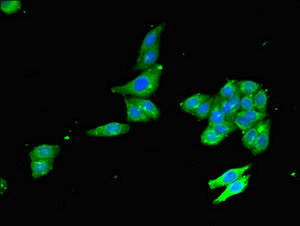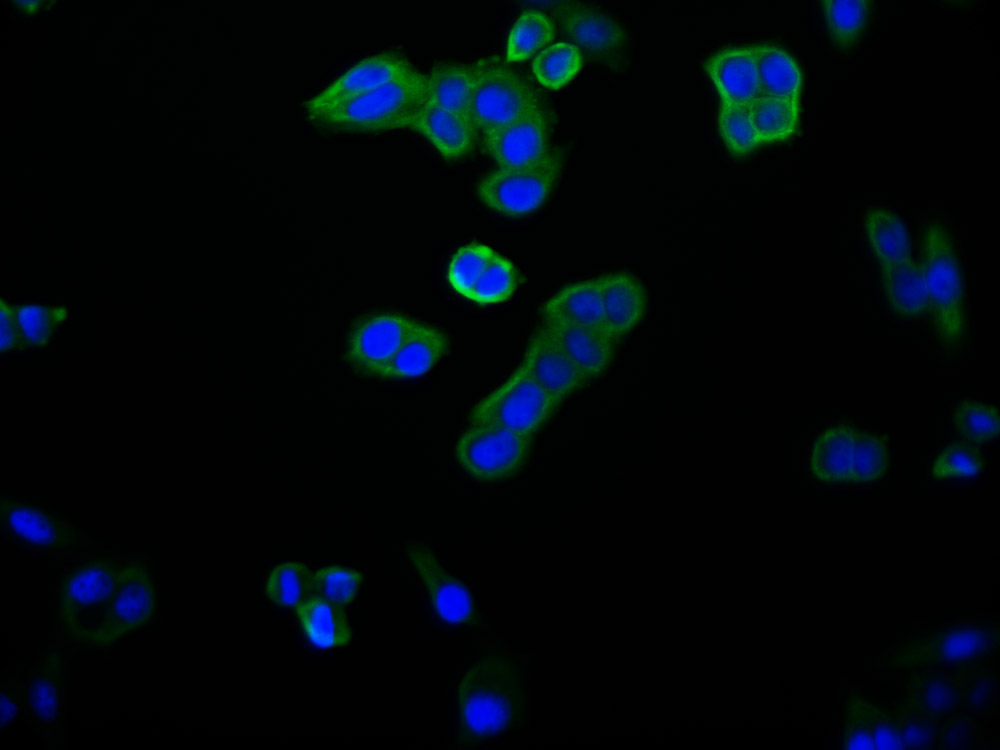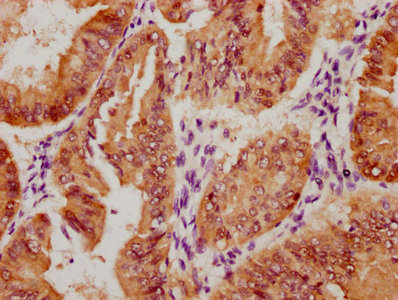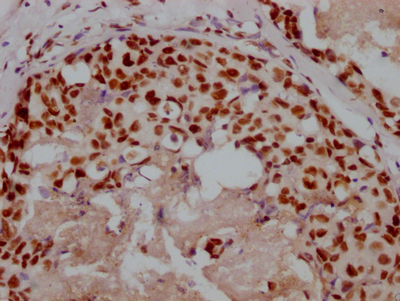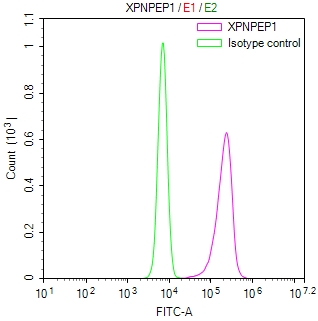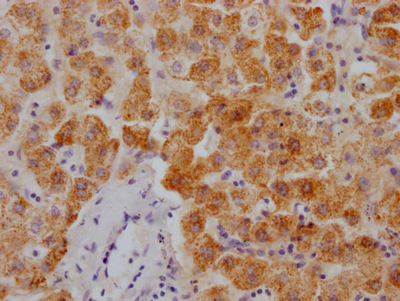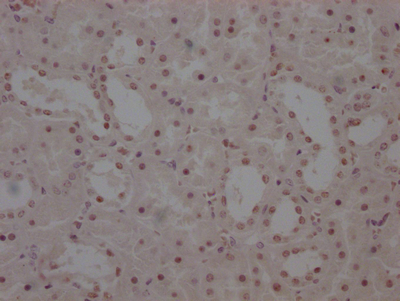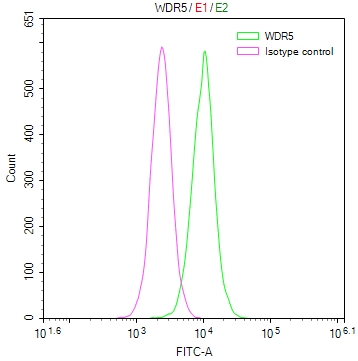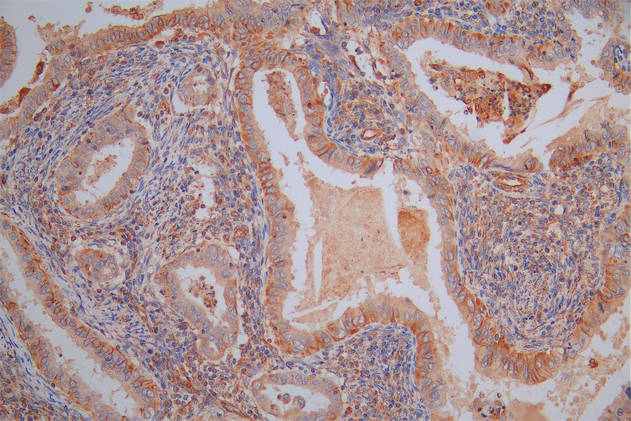ZFYVE26 Antibody
-
货号:CSB-PA734654LA01HU
-
规格:¥440
-
促销:
-
图片:
-
其他:
产品详情
-
产品名称:Rabbit anti-Homo sapiens (Human) ZFYVE26 Polyclonal antibody
-
Uniprot No.:Q68DK2
-
基因名:ZFYVE26
-
别名:DKFZp686F19106 antibody; DKFZp781H1112 antibody; FYVE domain-containing centrosomal protein antibody; FYVE-CENT antibody; KIAA0321 antibody; Spastic paraplegia 15 (complicated autosomal recessive) antibody; Spastizin antibody; SPG15 antibody; ZFY26_HUMAN antibody; ZFYVE 26 antibody; ZFYVE26 antibody; Zinc finger FYVE domain containing 26 antibody; Zinc finger FYVE domain containing protein 26 antibody; Zinc finger FYVE domain-containing protein 26 antibody
-
宿主:Rabbit
-
反应种属:Human
-
免疫原:Recombinant Human Zinc finger FYVE domain-containing protein 26 protein (2306-2473AA)
-
免疫原种属:Homo sapiens (Human)
-
标记方式:Non-conjugated
本页面中的产品,ZFYVE26 Antibody (CSB-PA734654LA01HU),的标记方式是Non-conjugated。对于ZFYVE26 Antibody,我们还提供其他标记。见下表:
-
克隆类型:Polyclonal
-
抗体亚型:IgG
-
纯化方式:>95%, Protein G purified
-
浓度:It differs from different batches. Please contact us to confirm it.
-
保存缓冲液:Preservative: 0.03% Proclin 300
Constituents: 50% Glycerol, 0.01M PBS, pH 7.4 -
产品提供形式:Liquid
-
应用范围:ELISA, IHC, IF
-
推荐稀释比:
Application Recommended Dilution IHC 1:20-1:200 IF 1:50-1:200 -
Protocols:
-
储存条件:Upon receipt, store at -20°C or -80°C. Avoid repeated freeze.
-
货期:Basically, we can dispatch the products out in 1-3 working days after receiving your orders. Delivery time maybe differs from different purchasing way or location, please kindly consult your local distributors for specific delivery time.
相关产品
靶点详情
-
功能:Phosphatidylinositol 3-phosphate-binding protein required for the abcission step in cytokinesis: recruited to the midbody during cytokinesis and acts as a regulator of abcission. May also be required for efficient homologous recombination DNA double-strand break repair.
-
基因功能参考文献:
- Our protocol showed high specificity and sensitivity for homozygosity detection and facilitated the identification of novel mutations in GAN, GBA2, and ZFYVE26 in four families affected by hereditary spastic paraplegia or Charcot-Marie-Tooth disease PMID: 26492578
- spastizin and spatacsin were essential components for the initiation of lysosomal tubulation. Together, these results link dysfunction of the autophagy/lysosomal biogenesis machinery to neurodegeneration. PMID: 25365221
- ZFYVE26 is a key determinant of autophagosome maturation PMID: 24284334
- spg15 should be search for in the case of juvenile levodopa reponsive parkinsonism PMID: 24366652
- We propose AP-5, SPG15, SPG11 form a coat-like complex, with AP-5 involved in protein sorting, SPG15 facilitating docking of the coat onto membranes by interacting with PI3P via its FYVE domain, and SPG11 (possibly together with SPG15) forming a scaffold. PMID: 23825025
- spastizin interacts with the autophagy related Beclin 1-UVRAG-Rubicon multiprotein complex and is required for autophagosome maturation. PMID: 24030950
- SPG15 was strongly expressed in cortical and spinal motor neurons and in embryos. It partially co-localized with multiple organelles, particularly with protein-trafficking vesicles, endoplasmic reticulum, microtubules and the mitochondria surface. PMID: 21545838
- Findings suggest a positive feedback loop for recruitment of FYVE-CENT and Beclin 1 to the intercellular bridge during cytokinesis, and reveal a novel potential tumor suppressor mechanism for Beclin 1. PMID: 21455500
- PtdIns(3)P production is essential for proper cytokinesis. PtdIns(3)P-binding centrosomal protein FYVE-CENT and TTC19 control cytokinesis through their translocation from the centrosome to the midbody mediated by the kinesin protein KIF13A. PMID: 20208530
- phenotypic heterogeneity of SPG15 in which mental retardation or cognitive deterioration, but not all other signs of Kjellin syndrome, are associated with hereditary spastic paraplegia and significantly reduces the SPG15 locus PMID: 17661097
- Autosomal recessive HSP-TCC is a frequent subtype of complicated HSP in Tunisia and is clinically and genetically heterogeneous. SPG11 and SPG15 are the major loci for this entity. PMID: 18332254
- Refinement of SPG15 to a 2.64 Mb genetic interval on chromosome 14q23.3-q24.2 and the identification of ZFYVE26 was reported in families with complicated autosomal-recessive spastic paraplegia, including Kjellin syndrome. PMID: 18394578
- Of patients with hereditary spastic paraplegia-thin corpus callosum, the largest analyzed so far, SPG15 was the second most frequent form (11.5%) after SPG11. PMID: 19805727
- phenotype and mutation frequency compared with SPG11 in complicated hereditary spastic paraplegia PMID: 19917823
显示更多
收起更多
-
相关疾病:Spastic paraplegia 15, autosomal recessive (SPG15)
-
亚细胞定位:Cytoplasm, cytoskeleton, microtubule organizing center, centrosome. Midbody. Note=Localizes to the centrosome during all stages of the cell cycle. Recruited to the midbody during cytokinesis by KIF13A.
-
组织特异性:Strongest expression in the adrenal gland, bone marrow, adult brain, fetal brain, lung, placenta, prostate, skeletal muscle, testis, thymus, and retina. Intermediate levels are detected in other structures, including the spinal cord.
-
数据库链接:
HGNC: 20761
OMIM: 270700
KEGG: hsa:23503
STRING: 9606.ENSP00000251119
UniGene: Hs.98041
Most popular with customers
-
YWHAB Recombinant Monoclonal Antibody
Applications: ELISA, WB, IF, FC
Species Reactivity: Human, Mouse, Rat
-
Phospho-YAP1 (S127) Recombinant Monoclonal Antibody
Applications: ELISA, WB, IHC
Species Reactivity: Human
-
-
-
-
-
-


